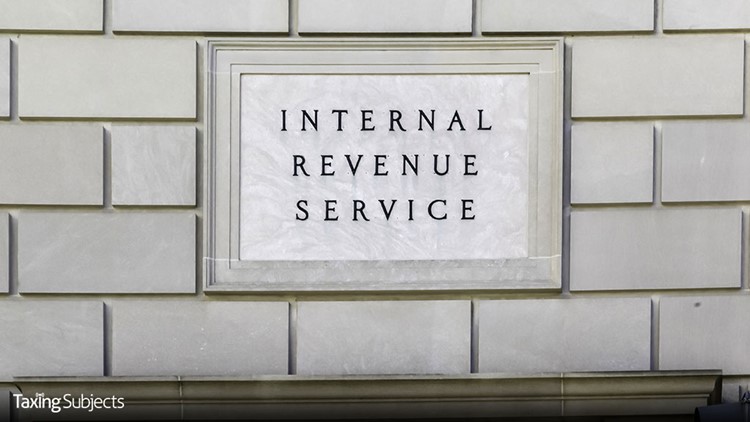
The Internal Revenue Service has set Friday, Feb. 12, 2021, as the start of the nation’s tax season. That’s the day the agency will begin accepting and processing 2020 tax year returns.
The IRS says the February start date for individual returns will give it time to do additional programming and testing of its computer systems in the wake of tax law changes that came through on Dec. 27, providing a second round of Economic Impact Payments.
These programming changes are termed “critical” by the IRS. If filing season opened without these changes in place, the agency says there could be a delay in getting refunds to taxpayers. The changes, they stress, ensure that eligible people will receive any remaining stimulus money as a Recovery Rebate Credit when they file their 2020 tax return.
In order to speed up the refund process, the IRS recommends filing electronically with direct deposit as soon as taxpayers have the filing information they need. People can file immediately using the tax professional of their choice. They’re starting to accept tax returns now; the returns will be held and transmitted to the IRS starting on Feb. 12.
“Planning for the nation’s filing season process is a massive undertaking, and IRS teams have been working non-stop to prepare for this as well as delivering Economic Impact Payments in record time,” said IRS Commissioner Chuck Rettig. “Given the pandemic, this is one of the nation’s most important filing seasons ever. This start date will ensure that people get their needed tax refunds quickly while also making sure they receive any remaining stimulus payments they are eligible for as quickly as possible.”
Last year’s average tax refund was more than $2,500. More than 150 million tax returns are expected to be filed this year, with the vast majority before the April 15 deadline.
Some delays are the new normal
Taxpayers should keep in mind that under the PATH Act, the IRS cannot issue a refund involving the Earned Income Tax Credit (EITC) or the Additional Child Tax Credit (ACTC) before mid-February.
The law gives additional time to help the IRS stop fraudulent refunds and claims from being issued—especially to identity thieves. Therefore, the IRS expects a refund available for these credits in the first week of March if taxpayers file electronically with direct deposit and there are no issues with their tax returns.
Taxpayers should check Where’s My Refund for their individual refund date.
Overall, the IRS anticipates nine out of 10 taxpayers will receive their refund within 21 days of when they file electronically with direct deposit if there are no issues with their tax return. The IRS urges taxpayers and tax professionals to file electronically. Avoid filing paper returns wherever possible to escape delays in processing.
Tips for faster filing
To speed refunds and help with tax filing, the IRS urges taxpayers and tax pros to follow some simple steps:
- File electronically and use direct deposit for the quickest refunds.
- Check IRS.gov for the latest tax information, including the latest on Economic Impact Payments. There is no need to call.
- Those who may be eligible for stimulus payments should carefully review the guidelines for the Recovery Rebate Credit. Most people received Economic Impact Payments automatically, and anyone who received the maximum amount does not need to include any information about their payments when they file. However, those who didn’t receive a payment or only received a partial payment may be eligible to claim the Recovery Rebate Credit when they file their 2020 tax return.
- Remember, advance stimulus payments received separately are not taxable, and they do not reduce the taxpayer’s refund when they file in 2021.
Dates to remember
Enter these dates on the calendar; they’re important for this year’s filing season:
- January 29. Earned Income Tax Credit Awareness Day to raise awareness of valuable tax credits available to many people—including the option to use prior-year income to qualify.
- February 12. IRS begins 2021 tax season. Individual tax returns start being accepted and processing begins.
- February 22. Projected date for the IRS.gov Where’s My Refund tool being updated for those claiming EITC and ACTC, also referred to as PATH Act returns.
- First week of March. Tax refunds begin reaching filers claiming EITC and ACTC (PATH Act returns) for those who file electronically with direct deposit and there are no issues with their tax returns.
- April 15. Deadline for filing 2020 tax returns.
- October 15. Deadline to file for those requesting an extension on their 2020 tax returns
Patience will be rewarded
As we mentioned, the opening of filing season follows the IRS’ work to update its computer programming and to test its systems, so they can factor in the second Economic Impact Payments and other changes in the tax laws.
The changes are complex. It takes time to help ensure the proper processing of tax returns and refunds. To this, add the need for coordination with the rest of the tax software industry, and the Feb. 12 start date is the result.
The IRS says there’s simply no way around the later start: the agency simply must ensure its systems are prepared to properly process and check tax returns to verify the proper amount of EIPs are credited on taxpayer accounts—and provide remaining funds to eligible taxpayers.
And late starts to the filing season aren’t unknown. While tax seasons frequently begin in late January, there have been five instances since 2007 when filing seasons didn’t start for some taxpayers until February because of tax law changes made just before tax time.
Source: IR-2021-16
